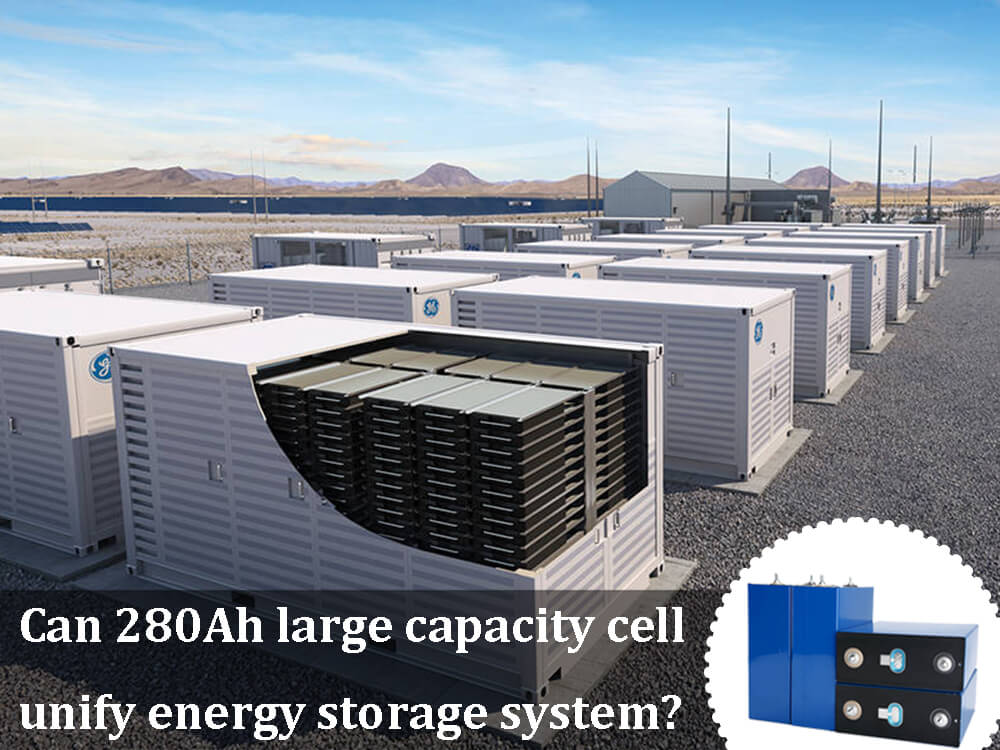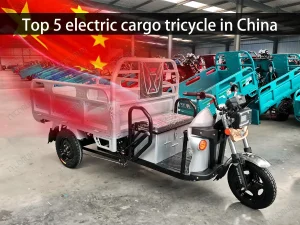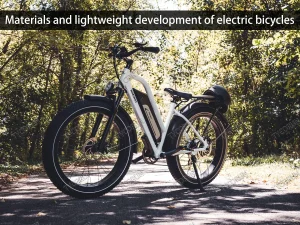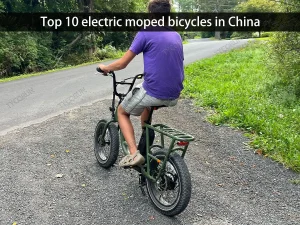Can 280Ah large capacity cell unify energy storage system

280Ah large capacity battery cells
The large-capacity cells that are currently popular in the ESS industry, which can greatly increase the energy density of the energy storage system and is one of the important trends in system development choices.
Recently, Xiamen Haichen New Energy, CALB, Ruipu, and Chuneng New Energy have expanded their production of 280Ah batteries. On May 29, the M1 smart factory of the first phase of Xiamen Haichen New Energy’s lithium battery smart manufacturing project was delivered and started production.
The overall layout of the plant is 5 lithium battery manufacturing production lines, with an annual production capacity of 15GWh. On the 19th of the same month, it also announced that it would invest 13 billion RMB to build a 50GWh new-generation energy storage lithium battery production base in Chongqing, focusing on expanding the production of 280Ah battery products for power storage applications.
In late May, China Innovation Airlines released energy storage products for the marine market, covering 280Ah and other series of batteries and a variety of battery packs. There are various signs that large-capacity batteries are gradually penetrating the market.
More than Top 10 LiFePO4 cell manufacturers in China have sold 280Ah battery products in China
| Serialnumber | Manufacturers | Time to market(year) |
|---|---|---|
| 1 | CATL | 2020 |
| 2 | EVE | 2021 |
| 3 | Ruipu | 2021 |
| 4 | Hithium | 2021 |
| 5 | Lishen | 2021 |
| 6 | Guoxuan hi-tech | 2021 |
| 7 | Penghui | 2021 |
| 8 | CALB | 2021 |
| 9 | Narada | 2022 |
| 10 | Chuneng | 2022 |
Whether it is a cylindrical lithium battery or a square lithium battery, it is gradually developing towards a larger capacity of a single cell. Cylindrical lithium batteries have been continuously developed from 18650 to 21700, 4680 and other large cylinders, and square lithium batteries have evolved from VDA size cells, to MEB platform cells, and then to the current (long and short) blade batteries.
The direction of technological evolution is mainly towards single The capacity of the body cell has been continuously improved and developed. The gradual upgrade of the single cell capacity of the square cell from the past 50/100Ah to the 280Ah large-capacity cell also conforms to the above evolution trend.
In 2020, CATL will launch its 271Ah & 280Ah batteries featuring long cycle life, and complete UL 9540A testing and achieve large-scale mass production. Based on this long-life cell technology, CATL as one of Top 10 power battery companies launched the outdoor liquid-cooled electric cabinet EnerOne in 2020.
This product uses a 280Ah lithium iron phosphate battery with a discharge rate of 1C and a cycle life of 10,000 times. However, the Ningde era never imagined that it would open the era of energy storage 280Ah batteries.
At present, the attention of downstream owners and investors on 280Ah large batteries is rapidly increasing: In January 2022, China Huaneng Group issued a tender announcement for the procurement and leasing of energy storage batteries, purchasing a total of 2GWh of energy storage batteries, and requiring a single capacity of not less than 280Ah ;
Jiangsu Tianhe also purchased 150/280/300Ah lithium battery cells from Penghui subsidiary Jiangsu Tianhui in February this year, with a contract value of 600-900 million RMB. Large-capacity cells have become an important product for cell companies to enter the high-end, large-scale energy storage market and obtain gigawatt-hour orders.
Can 280Ah batteries unify energy storage system
How big is the battery cell of the energy storage system? There is still some controversy in the industry. Because it is different from China, the ternary cells of Samsung SDI and LG Chem in other countries do not exceed 120Ah, especially Tesla has brought the advantages of small cells to the extreme.
Some business people told the high-tech energy storage that the 280Ah battery is derived from the power battery. However, energy storage is a field that is very different from power, so whether 280Ah becomes the top stream remains to be verified. BYD’s 320Ah energy storage battery will also be available soon.
Zhongtian Technology New Energy Industry Group, which chose 210Ah large energy storage batteries, said that the battery is not the pursuit of large capacity, but should consider safety and long cycle life.
At that time, Zhongtian Energy Storage chose 210Ah batteries mainly based on investment cost considerations. To enlarge the batteries is to follow the law of market development, and also consider the high safety requirements of energy storage on the grid side.
Generally speaking, it is relatively more difficult for large-capacity cells to dissipate heat, the consistency control of the energy storage system is more difficult, and its energy density is higher;
When small cells require multiple series and parallel connections in the system integration process, it is impossible for BMS and EMS to sample every node. High cost.
Due to the limitations of BMS, the single cell of the energy storage cell should be large, but not infinitely large. Because the larger the battery cell, the higher the energy, and once there is a risk, the release rate and energy are greater. So you can’t blindly pursue the big. The general principle should be based on high safety and long cycle life.
More and more companies are pouring into the ‘280Ah cell research and development track’, not to mention the practices of those powerful manufacturers, but some new companies are also pouring in, which makes people feel that they are blindly following the trend.
Due to the deep coupling between cell specifications and product design, from the perspective of industry development laws, battery cells will naturally converge to a unified specification. At present, the 280Ah size is generally recognized as a unified specification in the short term.
With the iteration of technology, the cell capacity may continue to increase, but the size will gradually become fixed. From the perspective of integrators, it will gradually require the battery cell specifications in the market to be unified.
Advantages and technical challenges of 280Ah cells
280Ah large-capacity batteries are gradually being recognized by the large-scale energy storage market, and this trend is still obvious.
The advantages include four points: 1. Reduce the number of parallel connections; 2. Can support longer-duration energy storage systems; 3. Easier BMS management; 4. Cost advantage for high-volume applications.
Compared with 50-100Ah capacity batteries, the advantages of 280Ah and above large cells are mainly concentrated in:
1) The use of components at the pack end is reduced, which has a natural cost advantage; the volumetric energy density is higher;
2) Larger cells are easier to obtain high capacity; safety is improved;
3) The use of large cells in the field of back-end integration has a high degree of simplification of the assembly process, which can greatly save the cost of land infrastructure, containers, etc.
Based on the above advantages, 280Ah batteries are accelerating the replacement of traditional 50Ah and 100Ah battery products in scenarios such as wind and solar power generation, grid side, shared energy storage side and some large-scale mobile ESS applications that pursue low cost, large capacity and safety.
In terms of production process, 280Ah large cells mainly have two processes: lamination and winding. Among them, the advantages of winding are high degree of automation, high production efficiency, and the production line efficiency can reach 9-11PPM.
However, the 280Ah battery produced by winding has poor uniformity, and the mechanical stress of the battery and the increase in thickness have problems such as C angle.
The lamination process is derived from the soft pack battery. Due to the larger contact surface of the pole piece, there are no problems such as mechanical stress and C angle, and the produced large cell products have better consistency and higher cycle life. The disadvantages of the lamination process mainly include pole piece burr removal and low efficiency, and the yield rate is not as good as that of the winding process.
The large-scale single cell also brings certain challenges to product development and production. The first is the increase in the volume and capacity of the battery, which leads to the deterioration of the heat dissipation performance of the battery itself, and the second is that the bulging problem of the battery is more obvious than the previous model.
Finally, the production efficiency of 280Ah large cells is low, and the production line efficiency of leading enterprises is 6~11PPM, which is much lower than that of 50Ah and 100Ah square cells.
In this context, the large-scale development of 280Ah will inevitably require innovation in cell design concepts, especially in terms of thermal balance and electrical balance design, and thermal management technology.
High voltage battery is also an important trend in energy storage battery technology, you can learn relevant information from the link.




























